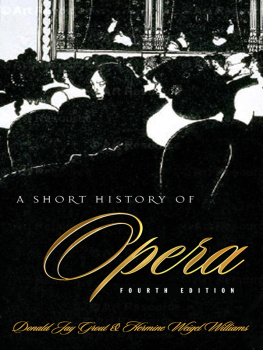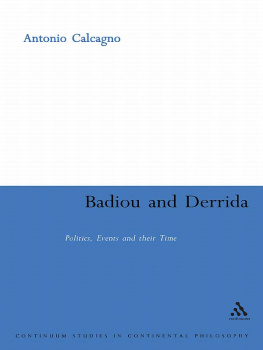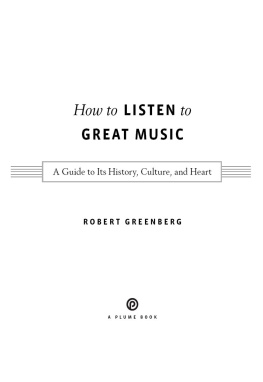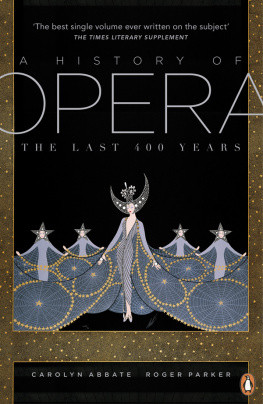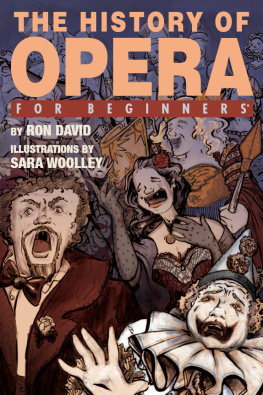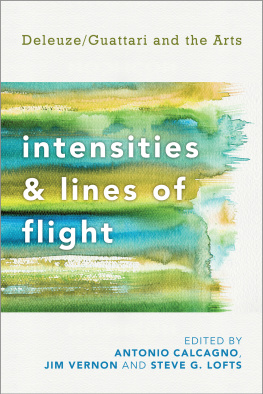From Madrigal to Opera
The publisher gratefully acknowledges the generous support of
the Ahmanson Foundation Humanities Endowment Fund
of the University of California Press Foundation.
From Madrigal
to Opera
Monteverdis Staging of the Self

Mauro Calcagno

University of California Press, one of the most distinguished university presses in the United States, enriches lives around the world by advancing scholarship in the humanities, social sciences, and natural sciences. Its activities are supported by the UC Press Foundation and by philanthropic contributions from individuals and institutions. For more information, visit www.ucpress.edu .
University of California Press
Berkeley and Los Angeles, California
University of California Press, Ltd.
London, England
2012 by The Regents of the University of California
Library of Congress Cataloging-in-Publication Data
Calcagno, Mauro P.
From madrigal to opera : Monteverdis staging of the self / Mauro Calcagno.
p. cm.
Includes bibliographical references and index.
ISBN 978-0-520-26768-8 (cloth : alk. paper)
ISBN 978-0-520-95152-5 (ebook)
1. Monteverdi, Claudio, 15671643. Operas. 2. Monteverdi, Claudio, 15671643. Madrigals. 3. Petrarchism. I. Title.
ML410.M77C33 2012
Manufactured in the United States of America
21 20 19 18 17 16 15 14 13 12
10 9 8 7 6 5 4 3 2 1
In keeping with a commitment to support environmentally responsible and sustainable printing practices, UC Press has printed this book on Rolland Enviro100, a 100% post-consumer fiber paper that is FSC certified, deinked, processed chlorine-free, and manufactured with renewable biogas energy. It is acid-free and EcoLogo certified.
To Jamuna, con amore
CONTENTS
ILLUSTRATIONS
FIGURES
MUSICAL EXAMPLES
TABLES
ACKNOWLEDGMENTS
To my beloved parents, Elide and Mario Calcagno, I owe an inexpressible debt of gratitude. To Ellen Rosand, my heartfelt thanks for her role in this project and much more. I am also grateful to John and Jehanara Samuel for their support during all the phases of the book.
I am very grateful to Mary Francis, my wonderful editor at the University of California Press, for all of her patience, help, and advice along the way; to Bonnie Blackburn, from whom I had the privilege to receive precious comments on the manuscript; and to Rose Vekony and Eric Schmidt for their invaluable assistance. The two anonymous readers for the Press provided greatly stimulating feedback, from which the book much benefitted. While holding a teaching appointment at Harvard, I appreciated the many courtesies of Virginia Danielson and Sarah Adams as leaders of the Eda Kuhn Loeb Music Library and of Isham Memorial Library, respectively. At Stony Brook University, besides the generous help of the staff of the Music Library, directed by Gisele Schierhorst, I have been fortunate since 2008 to experience the support of my colleagues in the Music Department, especially Sarah Fuller, Arthur Haas, Perry Goldstein, and David Lawton. For precious suggestions and discussions at various stages of the project, I am indebted to Jane Bernstein, Tim Carter, Paolo Cecchi, Jody Cranston, Beth and Jonathan Glixon, Wendy Heller, John W. Hill, Jeffrey Kurtzman, Thomas Lin, Giuseppe Mazzotta, Arnaldo Morelli, Margaret Murata, Alex Rehding, Federico Schneider, and Anne Stone. I also thank those colleagues who patiently waited years for me to bring this project to conclusion, thereby indirectly supporting it, above all Philippe Vendrix. Finally, I am grateful to Antonia Arconti of the Museo Bilotti in Rome for her help in obtaining the permission to reproduce the image on the dust jacket.
I gladly acknowledge the support of the 2002 Fellowship Program of the American Council of Learned Societies, and of the Italian Academy for Advanced Studies in America at Columbia University (directed by David Freedberg) in 201112. Finally, From Madrigal to Opera has also benefitted from the feedback I received when lecturing at the University of Illinois Urbana-Champaign (2000), Princeton University and The Johns Hopkins University (2004), Oxford University (2005), Harvard University (2007), Stony Brook University (2007), Yale University (2008), the City University of New York-Graduate Center (2009 and 2010), as well as at the Annual Meetings of the Society for Seventeenth-Century Music (1999), the American Musicological Society (2000, 2002, and 2006), and the Renaissance Society of America (2007).
This book could not have been conceived, developed, written, and brought to conclusion without my wife, Jamuna Samuel.
Introduction
From Madrigal to Opera examines how selves emerge and are perceived in two musical genres mastered by Claudio Monteverdi. In the early seventeenth century, the madrigal, which began flourishing in the 1520s in Florence, was in its final stage of development. Meanwhile, in the same Tuscan city ruled by the Medici family, the new genre of opera was dawning. Around that time, in the north Italian court of Mantua, a still-young Monteverdi was serving at the court of Duke Vincenzo Gonzaga, before eventually moving to Venice, where he remained employed by the local government for the rest of his life. As we listen today to a vocal quintet performing Monteverdis madrigal Cruda Amarilli, as we watch a soprano impersonating La Musica and entering stage in his opera Orfeo, or experience the celebrated love duets of Nero and Poppaea in Lincoronazione di Poppea, our senses and intellect are powerfully drawn to the performers, to the music they sing, the characters they enact, and their stories. If this experience is in part like that of watching someone reading a Shakespeare sonnet, or a theater company staging one of his plays, it is also radically different. Why is the compound of words, music, and gesture characterizing Monteverdis madrigals and operas still so effective for todays audiences? How do the agents involved in the creation and performance of texted music interact with one another? How does texted music tell stories (of gods, demigods, mortals) and what is the specific role of music and of the performer in this process? Finally, what did the shift from writing for the chamber to writing for the stage mean for musicians active at the beginning of the seventeenth century? What were the new issues that Monteverdi, for example, had to confront as a composer?
In order to approach these questions, I explore in this book a cultural paradigm In its musical guise Petrarchism provides a productive access point to the issues raised above, but especially to the one that underpins, in my view, the otherssubjectivity. Since Petrarchs view on the human subject indelibly marked the course of Western elite culture, it makes sense to assume that music too inflected it in its own ways, not uncoincidentally in conjunction with text, often by Petrarch himself. From Madrigal to Opera investigates musics own contribution to Petrarchism, as a window on the issue of early modern subjectivity.
But if this book does investigate Petrarchism in works by Monteverdi and his predecessors, its larger claim is that this paradigm is also inherent in todays performances of madrigals and operas. Petrarchism is not only a cultural and historical phenomenon useful for understanding musical works as written artifacts, but it is also intrinsic to the way we experience them as performances. This has to do with the typically Petrarchan view of the self as inherently dialogic, with its potential of shifting identities and creating roles, which I discuss in their musico-theatrical aspects. Monteverdis works inflect this Petrarchan paradigm in ways that are consequential for our experience of opera as a genre. In this respect, discussions of performancesincluding operatic stagingsare as productive as those of scores for understanding the effectiveness of musical works, and they thus figure prominently in this book. In sum, rather than in distinctions between musical genres, I am interested in interactions among musico-poetic texts, their agents, and their performances, specifically in works by Monteverdi and his predecessors, as they inflect a particular view of the self originating with Petrarch.
Next page

